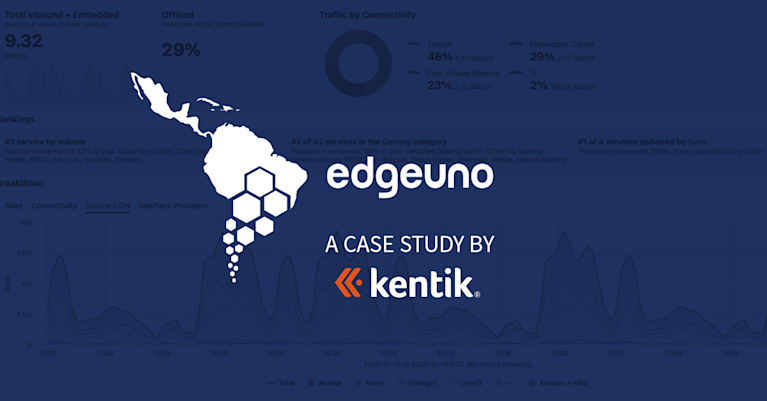Network Infrastructure: The Backbone of Modern Connectivity
Network infrastructure serves as the foundation of modern communication and data exchange, enabling seamless connectivity and collaboration between devices, applications, and users. By understanding its various components and their roles, businesses and organizations can build robust and secure infrastructures that support their operations and drive success. This article covers some of the basic, foundational topics around network infrastructure.
What is Network Infrastructure?
Network infrastructure refers to the physical and virtual components of a network that facilitate data flows between devices and support the applications that rely on them. These components include hardware devices, such as switches, routers, and servers, as well as software and protocols that enable communication and manage data transmission.
Networking: The Core of Network Infrastructure
Networking is the process of connecting and configuring network infrastructure components to facilitate data exchange and support various services. This includes the design, implementation, and management of network infrastructure to ensure reliable and secure communication between devices and applications. Networking is essential in providing seamless connectivity and enhancing the efficiency and performance of the entire infrastructure.
Security: Protecting Network Infrastructure and Applications
Securing network infrastructure involves implementing various measures to protect devices, applications, and data from unauthorized access and threats. This includes deploying firewalls, intrusion detection systems, and encryption technologies, as well as maintaining proper access controls and monitoring network activity. By proactively addressing potential vulnerabilities, businesses and organizations can safeguard their network infrastructure and maintain the integrity and confidentiality of their data and applications.
Data: Managing and Storing Information Across Network Infrastructure
Data management within a network infrastructure encompasses the processes of collecting, storing, processing, and transferring information between servers, devices, and applications. This includes establishing data storage and backup solutions, ensuring data integrity and security, and optimizing data transmission to minimize latency and maximize efficiency. A well-structured data management system is crucial for the smooth operation of network infrastructure and the applications that rely on it.
Access: Ensuring Communication and Routing Across Devices and Applications
Access within a network infrastructure refers to the mechanisms that enable devices to communicate with one another and with applications, as well as the routing of data between these components. Proper access management ensures that data flows efficiently and securely, while also minimizing potential threats and vulnerabilities. By implementing appropriate access controls, businesses and organizations can maintain the performance and security of their network infrastructure, supporting the diverse communication needs of their operations.
What Does a Network Infrastructure Consist of?
A network infrastructure consists of a variety of components that work together to enable seamless communication and data exchange. These components include:
- Physical devices: These include routers, switches, servers, and other hardware that facilitates data transmission and connectivity.
- Network cabling: Copper or fiber-optic cables, as well as wireless technologies, are used to establish physical connections between devices.
- Network protocols: Protocols, such as TCP/IP and Ethernet, govern how devices communicate and exchange data within the network.
- Network software: Software, such as operating systems, network management tools, and security applications, helps to configure, monitor, and secure network infrastructure.
- Network services: These are essential services, such as Domain Name System (DNS) and Dynamic Host Configuration Protocol (DHCP), that support the operation and management of network infrastructure.
What is Network Infrastructure Design?
Network infrastructure design is the process of planning and organizing the various components of a network infrastructure to meet the specific requirements and objectives of a business or organization. This involves considering factors such as network topology, capacity, performance, scalability, and security to create a robust and efficient network that supports data exchange, application usage, and communication needs.
What is Network Infrastructure Management?
Network infrastructure management involves the monitoring, maintenance, and optimization of the various components that make up a network infrastructure. This includes tasks such as:
- Monitoring network performance and identifying potential bottlenecks or issues.
- Configuring and maintaining hardware and software components to ensure optimal performance and security.
- Troubleshooting and resolving network issues, such as connectivity problems or device failures.
- Implementing and enforcing network security policies and practices to protect devices, data, and applications.
- Ensuring network infrastructure scalability and adaptability to support changing business requirements and growth.
What are Network Infrastructure Solutions?
Network infrastructure solutions encompass a range of products and services designed to support the planning, implementation, management, and optimization of network infrastructure. These solutions may include:
- Network hardware: Devices such as routers, switches, and servers that provide the foundation for data transmission and connectivity.
- Network software: Applications and tools used to configure, monitor, and secure network infrastructure components.
- Network services: Essential services that support the operation and management of network infrastructure, such as DNS and DHCP.
- Consulting and design services: Expert assistance in planning and designing network infrastructure to meet specific business or organizational requirements.
- Managed services: Outsourced management of network infrastructure, including monitoring, maintenance, and security.
Internet: The Global Network Infrastructure
The Internet is the largest and most extensive network infrastructure in the world, connecting billions of devices and users across the globe. It consists of interconnected networks that use standardized communication protocols, such as the Internet Protocol (IP) and the Transmission Control Protocol (TCP). This global system facilitates the exchange of data and information, enabling diverse services such as email, social media, and e-commerce.
The Internet’s infrastructure includes a complex hierarchy of networks, ranging from local area networks (LANs) to wide area networks (WANs), and relies on numerous components, such as routers, switches, and data centers, to function efficiently and securely.
What is Software-defined Networking (SDN)?
Software-defined networking (SDN) is a modern approach to network management that decouples the control plane, which makes decisions about how data is routed, from the data plane, which is responsible for forwarding data packets. SDN allows for centralized control and management of network infrastructure through software, enabling more efficient resource allocation, improved network visibility, and easier configuration and deployment of network services. By abstracting the underlying hardware from the control plane, SDN facilitates greater flexibility, scalability, and programmability in network infrastructure management.
Cloud Computing: The Evolution of Network Infrastructure
Cloud computing is a significant development in network infrastructure, offering a flexible and scalable approach to delivering computing resources and services over the Internet. It allows businesses and organizations to access and utilize resources, such as servers, storage, and applications, on a pay-as-you-go basis, without the need for maintaining on-premises infrastructure.
Cloud computing providers, such as Amazon Web Services (AWS), Microsoft Azure, and Google Cloud Platform (GCP), manage the underlying infrastructure, enabling clients to focus on their core operations and reduce the complexity of network management. As a result, cloud computing has transformed how network infrastructure is designed, deployed, and managed, driving innovation and efficiency across various industries.
Web Traffic: Managing Data Flows in Network Infrastructure
Web traffic refers to the flow of data across network infrastructure as users access and interact with websites and online services. Managing web traffic is an essential aspect of network infrastructure, as it directly impacts the performance, reliability, and security of web-based applications and services.
Network administrators employ various techniques to optimize web traffic, such as load balancing, caching, and content delivery networks (CDNs), ensuring that data flows efficiently and minimizing the impact of congestion or bottlenecks. Additionally, monitoring web traffic helps identify potential security threats, such as Distributed Denial of Service (DDoS) attacks, enabling businesses and organizations to respond proactively and protect their network infrastructure and applications.
Network Infrastructure Monitoring: Maintaining Performance and Security
Network infrastructure monitoring is the process of continuously observing and analyzing the performance, health, and security of network components, such as devices, connections, and data flows. This proactive approach enables businesses and organizations to detect and resolve issues before they escalate, minimizing downtime and ensuring optimal network performance. Key aspects of network infrastructure monitoring include:
- Performance monitoring: Assessing the speed, latency, and bandwidth utilization of network components to identify potential bottlenecks and optimize data transmission.
- Health monitoring: Evaluating the operational status of network devices, such as routers and switches, to detect and troubleshoot hardware or software failures.
- Security monitoring: Analyzing network activity to identify potential threats or unauthorized access, enabling businesses and organizations to implement appropriate countermeasures and maintain the integrity of their network infrastructure.
By implementing effective network infrastructure monitoring, businesses and organizations can ensure the reliability, performance, and security of their networks, supporting the diverse communication needs of their operations.
Network Topologies: Organizing Network Infrastructure
Network topologies refer to the arrangement and organization of devices and connections within a network infrastructure. Understanding and selecting the appropriate topology is crucial for optimizing performance, reliability, and scalability. Common network topologies include:
- Bus topology: All devices are connected to a single communication line or cable, with data transmitted in a linear fashion. This topology is simple and cost-effective but may suffer from performance issues as the number of devices increases.
- Star topology: Devices are connected to a central hub or switch, which facilitates data transmission between devices. This topology offers improved performance and easier troubleshooting, but the central hub can become a single point of failure.
- Ring topology: Devices are connected in a closed loop, with data transmitted sequentially between adjacent devices. This topology provides redundancy, but troubleshooting and adding new devices can be more complex.
- Mesh topology: Devices are interconnected, with multiple pathways for data transmission. This topology offers high redundancy and fault tolerance but can be complex and expensive to implement.
Choosing the right network topology depends on factors such as the size of the network, the required performance and reliability, and the available budget for infrastructure investment.
Network Virtualization: Enhancing Flexibility and Scalability
Network virtualization is a technology that allows multiple virtual networks to run on a single physical network infrastructure. By abstracting the physical hardware from the logical network connections, network virtualization enables greater flexibility, scalability, and manageability. Key benefits of network virtualization include:
- Simplified management: Centralized control and management of virtual networks reduce the complexity of network administration and maintenance.
- Improved resource utilization: Network resources can be allocated and shared more efficiently, reducing the need for additional hardware investments.
- Enhanced security and isolation: Virtual networks can be segregated, minimizing the risk of unauthorized access and potential threats.
Network virtualization technologies, such as VMware NSX and Cisco ACI, are widely used by businesses and organizations to optimize their network infrastructure and adapt to changing requirements and demands.
Network Redundancy: Ensuring Reliability and Resilience
Network redundancy is the practice of implementing multiple pathways and devices within a network infrastructure to ensure continued operation in the event of a failure or outage. By incorporating redundant components, businesses and organizations can maintain the availability and reliability of their network infrastructure, minimizing the impact of unexpected issues or disruptions. Strategies for achieving network redundancy include:
- Backup devices: Deploying secondary devices, such as routers and switches, that can take over if the primary device fails.
- Multiple connections: Implementing multiple connections between devices or network segments to ensure continued data transmission if one connection fails.
- Load balancing: Distributing network traffic across multiple devices or connections to prevent overloading and optimize performance.
Investing in network redundancy is essential for businesses and organizations that depend on the continuous availability and performance of their network infrastructure to support their operations and services.
Network Capacity Planning: Meeting Future Demands
Network capacity planning is the process of assessing and forecasting the future resource requirements of a network infrastructure, ensuring that it can meet the demands of growing user bases, increased data traffic, and evolving technologies.
By proactively planning for future needs, businesses and organizations can prevent performance issues and bottlenecks, maintain the reliability and security of their network infrastructure, and optimize their investment in network resources. Key aspects of network capacity planning include:
- Analyzing current network performance and resource utilization to identify potential areas for improvement or expansion.
- Estimating future requirements based on factors such as user growth, application usage, and technology trends.
- Developing and implementing a capacity plan that balances the need for additional resources with budget constraints and other priorities.
Regularly revisiting and updating the network capacity plan is essential to ensure that the network infrastructure remains agile and adaptable to the changing needs and demands of the business or organization. By engaging in ongoing network capacity planning, businesses and organizations can maintain a high-performing, scalable, and future-proof network infrastructure that supports their growth and success.
Network Infrastructure Best Practices: Maximizing Performance and Security
Adhering to network infrastructure best practices helps businesses and organizations optimize performance, maintain security, and ensure the smooth operation of their networks. Some key best practices to consider include:
- Regular maintenance: Schedule routine maintenance tasks, such as software updates, hardware inspections, and backup verification, to ensure the ongoing health and performance of network infrastructure components.
- Proactive monitoring: Implement network monitoring tools to detect potential issues, such as performance bottlenecks or security threats, before they escalate and impact network operations.
- Strong security measures: Employ a multi-layered approach to network security, including firewalls, intrusion detection systems, encryption, and access controls, to protect devices, data, and applications from unauthorized access and threats.
- Scalable design: Plan and design network infrastructure with scalability in mind, allowing for the seamless addition of new devices, users, and applications as the business or organization grows.
- Documentation: Maintain accurate and up-to-date documentation of network infrastructure, including network diagrams, device configurations, and policies, to facilitate troubleshooting, maintenance, and planning.
By following these best practices, businesses and organizations can create a robust, secure, and efficient network infrastructure that supports their diverse communication and data exchange needs.
Ensuring Robust Network Infrastructure with Kentik
A reliable and secure network infrastructure is essential for the success of any business or organization. By understanding the various components and concepts involved in network infrastructure, businesses can build and maintain a strong foundation for their operations, supporting seamless communication, data exchange, and application usage.
Kentik, as a leading network analytics and monitoring platform, plays a vital role in empowering businesses to optimize their network infrastructure. By providing real-time insights, advanced analytics, and comprehensive visibility into network performance, security, and capacity, Kentik enables organizations to proactively manage their networks, ensuring the highest levels of reliability, performance, and security. Investing in a robust network infrastructure, coupled with the insights and support provided by Kentik, enables businesses and organizations to thrive in an increasingly connected and competitive landscape.


